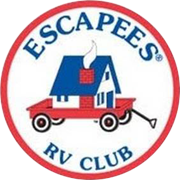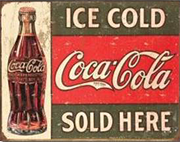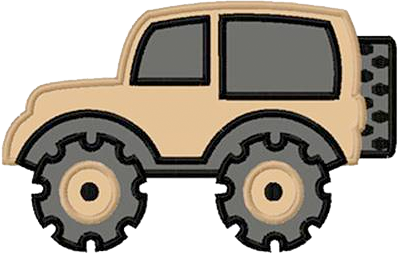RV Related Terms and Definitions
 AC: AC is 120-volt alternating current (same as in houses).
AC: AC is 120-volt alternating current (same as in houses).
Actual Weight: Often referred to as “Weight” is the measured weight of an object.
Anode Rod: An anode rod, when used in a water heater, attracts corrosion causing products in the water. These products attack the anode rod instead of the metal tank itself. The anode rod should be inspected yearly and changed when it is reduced to about 1/4 of its original size. The rods are used in steel water heater tanks – an aluminum tank has an inner layer of anode metal to accomplish the same thing. Anode rods should not be installed in an aluminum tank!
Arctic Package: A feature on an RV that adds additional insulation, storm windows and heat pads/strips for the holding tanks and water lines, to enable the RV to be used in cold weather.
Axle Ratio: The ratio between the pinion and ring gears in the differential that multiply the torque provided by the engine. It is the number of driveline revolutions required to turn the axle one time. As an example, with a 4.10:1 axle the driveline turns 4.1 times for each full axle revolution. The higher the number, the more torque and thus more towing power. However, the higher the number the slower your vehicle speed.
Backup Monitor: A camera in the back of a motorhome, with the monitor positioned somewhere on the dashboard for the driver, to aid in backing up the motor-home. It is also used while driving to see the traffic behind and to keep an eye on your towed vehicle.
Ball Mount: The part of the hitch system that supports the hitch ball and connects it to the trailer coupler. Ball mounts are available in load carrying and weight distributing configurations.
Basement: The storage area below the floor of the RV, accessible from the outside. Basement storage usually refers to storage in a Class-A or Class-C motorhome.
Black Water: Disposal water from toilet system, held in holding tank until you dump it, in large tanks or dumping station available at most campgrounds.
Black Water Tank: The black water tank on an RV holds the sewage water from the toilet. This should always be dumped at a campgrounds dump station or into the campsite sewer connection.
Boon Docking: Also known as dry camping, boon docking refers to camping without any hook-ups, namely camping without hooking up to any electric, sewer or water facilities. You can still have electric from your RV batteries and water from your freshwater holding tank.
Brake Controller: A control unit mounted inside the vehicle that allows the electric brakes on the trailer to become activated in harmony with the braking of the tow vehicle. The controller can also be used to manually activate the trailer brakes.
Break-Away System: A system designed to automatically lock the trailer brakes in the event of a hitch failure, where the trailer may break away from the tow vehicle.
British Thermal Unit (BTU): A measurement of heat that refers to the quantity required to raise the temperature of one pound of water one degree F. (Fahrenheit). RV air conditioners and furnaces are BTU-rated.
Cargo Weight: The actual weight of all items or gear added to the Curb Weight of the vehicle or trailer.
Condensation: Condensation is a result of warm moisture laden air contacting the cold window glass. Keeping a roof vent open helps to reduce the humidity levels. Added roof vent covers help to prevent cold air from dropping down through the vent while still allowing moist air to escape. Using the roof vent fan when showering or the stove vent fan when cooking also helps prevent excess moisture buildup.
Converter: An electrical device for converting 120-volt AC power into 12-volt DC power. Most RVs with electrical hookups will have a converter, since many of the lights and some other accessories run on 12-volt DC.
Coupler: The part of the trailer that attaches to the ball of the hitch.
Curb Weight: The actual weight of a vehicle or trailer including all standard equipment with full fuel tanks, without people or gear.
DC: DC is 12-volt direct current (same as in motor vehicles)
Diesel Puller: The term for a motor home with the diesel engine mounted in the front of the vehicle. Also known simply as a Puller.
Diesel Pusher: The term for a motor home with the diesel engine mounted in the rear of the vehicle. Also known simply as a Pusher.
Dinette: Booth-like dining area. Table usually drops to convert unit into a bed at night.
Dinghy: The term for a vehicle that you are towing with your motor home. It is also known as a Toad
Doughnut: A rubber ring that seals one’s dump hose and the campsite sewer connection so that gases and odors do not escape. Sewer doughnuts are required in many locations.
Dry Camping: Also known as boon docking, dry camping refers to camping without any hook-ups, namely camping without hooking up to any electric, sewer or water facilities. You can still have electric from your RV batteries and water from your freshwater holding tank.
holding tank.
Dry Weight: The weight of the RV without any fuel, fresh water, propane or passengers.
DSI Ignition: Direct spark ignition – this term refers to the method of igniting the main burner on a propane fired appliance. The burner is lit with an electric spark and the flame is monitored by an electronic circuit board. This ignition system is used in refrigerators, furnaces and water heaters. There is now a version of stove tops that light the burners with a DSI ignition.
Dual Electrical System: RV equipped with lights, appliances which operate on 12-volt battery power when self-contained, and with a converter, on 110 AC current when in campgrounds or with an on-board generator.
Dually: A pickup truck, or light-duty tow vehicle, with four tires on one rear axle.
Ducted AC: Air conditioning supplied through a ducting system in the ceiling. This supplies cooling air at various vents located throughout the RV.
Ducted Heat: Warm air from the furnace supplied to various locations in the RV through a ducting system located in the floor. (similar to house heating systems)
Dump Station: A facility for dumping or emptying your black water and gray water holding tanks.
Equalizing Hitch: A hitch that utilizes spring bars that are placed under tension to distribute a portion of the trailer’s hitch weight to the tow vehicle’s front axle and the trailer’s axles. This hitch is also known as a weight distributing hitch
Fiver: Another name for a fifth-wheel RV.
FMCA: Family Motor Coach Association
Fresh (Water) Tank: The gallons of fresh water that can be stored for later use
Full Hookup: The ability to connect to all three of the campground’s facilities; electric, water and sewer.
Full-Timers or Full-Timing: The term used for people who live in their RV full time, or at least the vast majority of their time.
Generator: An electrical device powered by gasoline or diesel fuel, and sometimes propane, for generating 120-volt AC power.
Gray (Water) Tank: The gallons of gray waste that can be held in the RV. Gray water is waste from the sinks and shower.
Gray Water: Disposal water from sinks, shower. In some units, this is held in a tank separate from black water; is also dumped in tanks at campgrounds
Gross Axle Weight Rating (GAWR): The manufacturer’s maximum load weight, in pounds, that can be placed on the axle. If an axle has a 3500-lb. GAWR and the RV has two axles (tandem axles), then the RV would have a Gross Vehicle Weight Rating (GVWR) of 7000 lbs.
Gross Combined Weight (GCW): The combined weight of the tow vehicle and the trailer.
Gross Combined Weight Rating (GCWR): The manufacturers maximum load weight, in pounds, allowed for the trailer and tow vehicle. This rating includes the weight of the trailer, tow vehicle, fuel, water, propane, supplies and passengers.
Gross Trailer Weight (GTW): Gross trailer weight is the weight of the trailer fully loaded in its actual towing condition. GTW is measured by placing the fully loaded trailer on a vehicle scale. The entire weight of the trailer should be supported on the scale.
Gross Vehicle Weight (GVW): The weight of the vehicle.
Gross Vehicle Weight Rating (GVWR): The manufacturer’s maximum load weight, in pounds, allowed for the vehicle. This rating includes the weight of the vehicle plus fuel, water, propane, supplies and passengers.
Heat Exchanger: A heat exchanger is a device that transfers heat from one source to another. For example, there is a heat exchanger in your furnace – the propane flame and combustion products are contained inside the heat exchanger that is sealed from the inside area. Inside air is blown over the surface of the exchanger, where it is warmed and the blown through the ducting system for room heating. The combustion gases are vented to the outside air.
Heat Strip: A heat strip is an electric heating element located in the air conditioning system with the warm air distributed by the air conditioner fan and ducting system. They are typically 1500 watt elements (about the same wattage as an electric hair dryer) and have limited function. Basically they “take the chill off”

Different brands and different styles of motor-homes…but the terms used in the “sport” are pretty universal.
Hitch Rating: The weight, assigned by the manufacturer, that the hitch is designed to handle.
Hitch Weight: The amount of a trailer’s weight that rests on the tow vehicle’s hitch. For travel trailers this weight should be 10% to 15% of the total weight of the trailer. For fifth wheels this weight should be 15% to 20% of the total weight of the trailer.
Holding Tanks: There are three different holding tanks on most RVs: Fresh Water, Gray Water and Black Water. The fresh water tanks hold the water you will use for water you will pump into your RV when you are not getting water from an outside source. The Gray Water tank holds water from your kitchen and shower. The black water tank holds the water and waste from your toilet.
Hookups: The ability of connecting to a campground’s facilities. The major types of hookups are electrical, water and sewer. If all three of these hookups are available, it is termed full hookup. Hookups may also include telephone and cable TV in some campgrounds.
Hula Skirt: A skirt placed on the back bumper of a motor-home to stop debris that is thrown from the rear wheels from damaging vehicles behind the motorhome, either the vehicle you are towing or other vehicles behind the motor-home
Inverter: An electrical device that changes 12 volt battery power to 120 volt AC power. It is used when “boon docking” (camping without hookups) to power certain 120 VAC only devices like a microwave oven. The amount of available power depends on the storage capacity of the batteries and the wattage rating of the inverter.
Laminate: A sandwich of structural frame members, wall paneling, insulation and exterior covering, adhesive-bonded under pressure and/or heat to form the RV’s walls, floor and/or roof.
Load: The amount of weight an object supports.
LP Gas: Liquefied Petroleum Gas. LP gas is used to fuel appliances in the RV, such as the stove, oven, water heater and refrigerator. Propane tanks are usually rated as pounds or gallons
Motor Coach: A motor-home that is built on a bus-type chassis
Net Carrying Capacity (NCC): Sometimes called the payload capacity, this is the maximum weight of fuel, water, propane, supplies and passengers that can be added to an RV without exceeding the Gross Vehicle Weight Rating (GVWR).
Part-Timers: The term used for people who use their RV more than usual (more than just a few weekend trips a year), but who still use it less than full time.
Payload Capacity: The maximum allowable weight that can be in or on a vehicle, including all cargo and accessories, fuel, freshwater, propane, passengers and hitch loads.
Pilot: A pilot is a small standby flame that is used to light the main burner of a propane fired appliance when the thermostat calls for heat. Pilots can be used in furnaces, water heaters, refrigerators, ovens and stove tops.
Pin Weight: Also called Kin Pin Weight, is the downward force exerted on the king pin by a fifth wheel hitch coupler. In most cases, it should be about 15 to 25 percent of GTW.
Pop-Out: The term for a room in an RV that pops out for additional living space.
Popup or Pop-Up: Another name for a folding camping trailer.
Porpoising: A term used to define the up and down motion in an RV while traveling.
Primitive Camping: Camping without use of hookups.
Propane: LPG, or liquefied petroleum gas, used in RVs for heating, cooking and refrigeration. Also called bottle gas, for manner in which it is sold and stored.
Pull Through: A camping site that allows you to pull through while setting up and leaving the area. A site where you do not have to back into or out of.
Puller: The slang term for a motor home with a front-mounted diesel engine.
Pusher: The slang term for a motorhome with a rear-mounted diesel engine.
Rating: The maximum allowable limits determined by the manufacturer in the design of the vehicle.
Receiver: The part of the hitch that permits a hitch bar to be inserted.
Reefer: A slang term for the refrigerator in your RV.
Rig: What many RVers call their units.
Roof Air Conditioning: Air conditioning unit mounted on roof of RV, to cool the RV when it is parked. When moving, most RVs are cooled by separate air conditioning units which are components of the engine, or they may be cooled by a roof top if a proper size generator is installed.
 RV: Short for Recreation Vehicle, a generic term for all pleasure vehicles which contain living accommodations. Multiple units are RVs and persons using them are RVers.
RV: Short for Recreation Vehicle, a generic term for all pleasure vehicles which contain living accommodations. Multiple units are RVs and persons using them are RVers.
RVDA: Recreational Vehicle Dealers Association
RVIA: Recreational Vehicle Industry Association
RVRA: Recreational Vehicle Rental Association
Safety Chains: A set of chains that are attached to both the trailer A-Frame and the tow vehicle while towing. Safety chains are intended to keep the trailer attached to the tow vehicle in the event of a hitch failure, preventing the trailer from completely separating from the tow vehicle.
Screen Room: The term for a screen enclosure that attaches to the exterior of an RV for a bug-free living area outside.
Self Contained: RV which needs no external electrical, drain or water hookup. Thus, it can park overnight anywhere. Of course, self-contained units can also hook up to facilities when at campgrounds.
Semi-Modern Camping: Camping with partial hookups, usually just electrical.
Sewer Doughnut: A rubber ring that seals one’s dump hose and the campsite sewer connection so that gases and odors do not escape. Sewer doughnuts are required in many locations
Shore Power: Electricity provided to the RV by an external source other than the RV batteries.
Slide-In: The term for a type of camper that mounts on a truck bed, because this type of camper slides in to the truck bed.
Slide-Out: Room or area in your RV that slides out to make additional space for living.
Slider: The slang term for a slider-hitch.
Slider Hitch: A sliding hitch used on short bed pickup trucks to enable them to tow fifth wheel trailers. It allows them sufficient clearance to make turns without having the trailer hit the cab of the truck.
Thermocouple: A device that monitors the pilot flame of a pilot model propane appliance. If the pilot flame is extinguished the thermocouple causes the gas valve to shut off the flow of gas to both the pilot flame and the main burner.
Tip-Out: The term used for an area or room in an RV that tips out for additional living space. The Tip-Out was generally used in older RVs. Newer RVs mainly use a slide-out.
Toad: The term for a vehicle that you are towing with your motor-home. It is also known as a Dinghy.
Tongue Weight: Tongue weight (TW) is the downward force exerted on the hitch ball by the trailer coupler. In most cases, it is about 10 to 15 percent of GTW.
Tow Bar: A bar used for connecting a towed vehicle to the motor home for towing with all four wheels on the ground.
Trailer Brakes: Brakes that are built into the trailer and are activated either by electric impulse or by a surge mechanism.
Transmission Cooler: A heat exchanger similar to a small radiator through which automatic transmission fluid passes and is cooled.
Triple Towing: The term used for three vehicles attached together, usually a tow vehicle pulling two separate trailers. A typical configuration might be a tow vehicle pulling a travel trailer with a boat behind that.
Underbelly: The RV’s under floor surface, which is protected by a weatherproofed material.
Unloaded Vehicle Weight (UVW): Sometimes called the Dry Weight, it is the weight of the RV without adding fuel, water, propane, supplies and passengers. The manufacturers UVW will not include any dealer-installed options.
Waste Water Tanks: The gray water tank holds the waste water from the sinks and showers. The black water tank holds the waste from the toilet.
Weight Carrying Hitch: A hitch designed to accept the entire hitch weight of the trailer. This hitch is also known as a dead weight hitch.
Weight Distributing Hitch: A hitch that utilizes spring bars that are placed under tension to distribute a portion of the trailer’s hitch weight to the tow vehicle’s front axle and the trailer’s axles. This hitch is also known as an equalizing hitch.:
Wet Weight: The weight of the RV with the fuel, freshwater and propane tanks full.
Wheelbase: Distance between center lines of the primary axles of a vehicle. If a motor home includes a tag axle, the distance is measured from the front axle to the center point between the drive and tag axles.
Wide Body: The term for an RV exceeding the normal eight feet wide. Wide Bodies are usually 102″ (8′ 6″) wide.






















